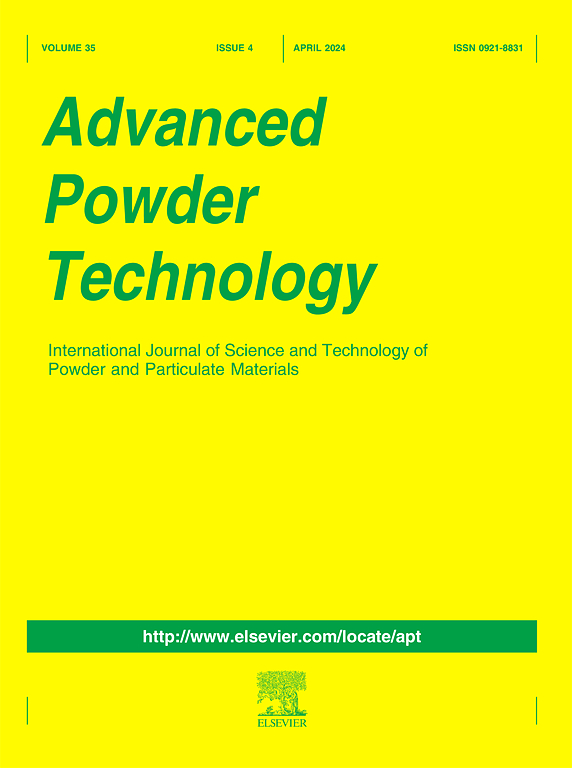了解高温下CaCO3-CaO粉末的颗粒粘附性
IF 4.2
2区 工程技术
Q2 ENGINEERING, CHEMICAL
引用次数: 0
摘要
在高温(500-800°C)下处理颗粒环材料对于化学环的有效操作很重要。粒子在高温下会表现出很高的附着力,这可能导致化学环的操作问题。本文研究了环状材料CaCO3-CaO在500-800℃下的颗粒粘附性。在大多数条件下,颗粒在CaCO3中的附着力随着温度和保留时间的增加而增加。拉伸强度的提高是由于CaCO3的弱烧结所致。在800℃时,拉伸强度随保温时间的延长而降低。这一现象仅在800°C时出现,此时脱羧作用进展迅速。脱羧产生的CO2气体在粉床中形成空隙,使粉床孔隙度增大,导致抗拉强度下降。此外,脱羧释放气体破坏了弱烧结结构,形成脆性粉床。本文章由计算机程序翻译,如有差异,请以英文原文为准。

Understanding particle adhesion in CaCO3–CaO powder at high temperatures
Handling of particulate looping materials at high temperatures (500–800 °C) is important for the effective operation of chemical looping. Particles can exhibit high adhesion at high temperatures, which can lead to operational problems in chemical looping. Herein, particle adhesion in CaCO3–CaO, a looping material, was carefully investigated at 500–800 °C. Particle adhesion in CaCO3 increased with increasing temperature and retention time under most of the investigated conditions. The increase in tensile strength was attributed to weak sintering of CaCO3. However, the tensile strength decreased with increasing retention time at 800 °C. This phenomenon was specific to 800 °C, where decarboxylation progressed rapidly. The CO2 gas generated by decarboxylation formed voids in the powder bed, which increased the porosity of the powder bed, resulting in a decrease in the tensile strength. In addition, gas release via decarboxylation broke the weak sintered structure, resulting in a brittle powder bed.
求助全文
通过发布文献求助,成功后即可免费获取论文全文。
去求助
来源期刊

Advanced Powder Technology
工程技术-工程:化工
CiteScore
9.50
自引率
7.70%
发文量
424
审稿时长
55 days
期刊介绍:
The aim of Advanced Powder Technology is to meet the demand for an international journal that integrates all aspects of science and technology research on powder and particulate materials. The journal fulfills this purpose by publishing original research papers, rapid communications, reviews, and translated articles by prominent researchers worldwide.
The editorial work of Advanced Powder Technology, which was founded as the International Journal of the Society of Powder Technology, Japan, is now shared by distinguished board members, who operate in a unique framework designed to respond to the increasing global demand for articles on not only powder and particles, but also on various materials produced from them.
Advanced Powder Technology covers various areas, but a discussion of powder and particles is required in articles. Topics include: Production of powder and particulate materials in gases and liquids(nanoparticles, fine ceramics, pharmaceuticals, novel functional materials, etc.); Aerosol and colloidal processing; Powder and particle characterization; Dynamics and phenomena; Calculation and simulation (CFD, DEM, Monte Carlo method, population balance, etc.); Measurement and control of powder processes; Particle modification; Comminution; Powder handling and operations (storage, transport, granulation, separation, fluidization, etc.)
 求助内容:
求助内容: 应助结果提醒方式:
应助结果提醒方式:


